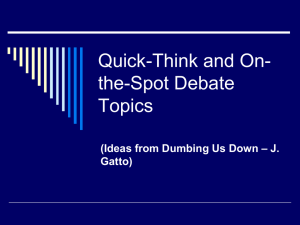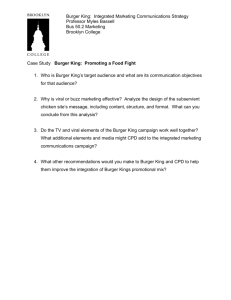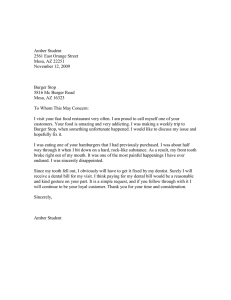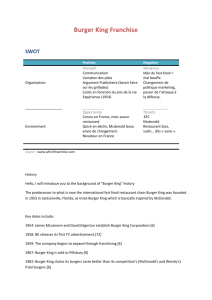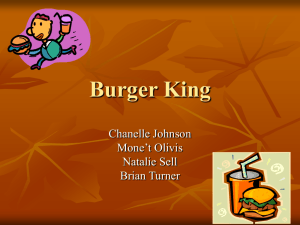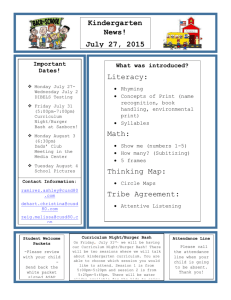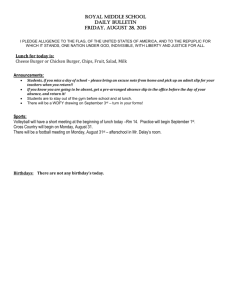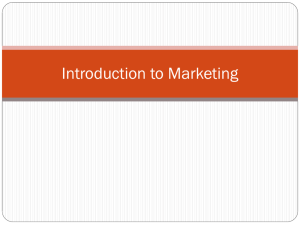File - Mr. Burger`s Art Exhibit
advertisement
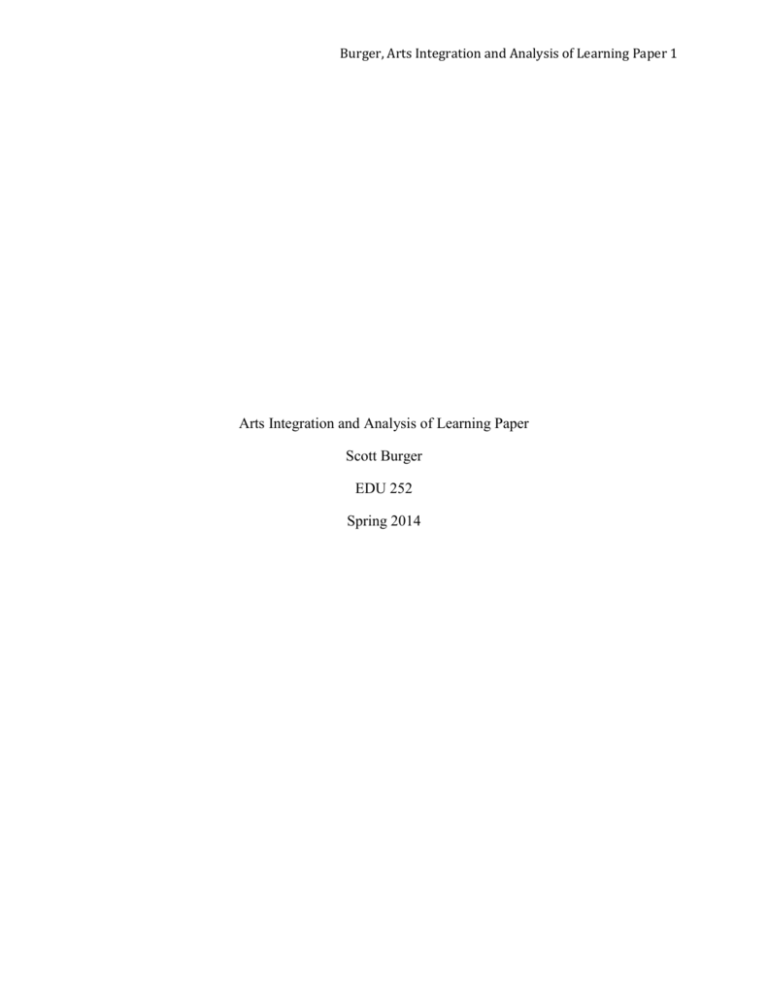
Burger, Arts Integration and Analysis of Learning Paper 1 Arts Integration and Analysis of Learning Paper Scott Burger EDU 252 Spring 2014 Burger, Arts Integration and Analysis of Learning Paper 2 “Every culture on this planet has art forms. Why is that? Neuroscientists continue to find clues as to how the mental and physical activities required for the arts are so fundamental to brain function. Certain brain areas respond only to music wile others are devoted to initiating and coordinating movement from intense running to the delicate sway of the arms. Drama provokes specialized networks that focus on spoken language and stimulate emotions. Visual arts excite the internal visual processing system to recall reality or create fantasy with the same ease” (Souse 2006). As humanity has progressed, the brain has become wired to react to the various forms of art in manners that cannot be duplicated through other methods of cognitive activation. In the early years of a child’s brain development, neural connections are emerging at a rapid rate due to the constant revelation of information and the exploration of new materials. What neurologists are beginning to understand is the correlation between continued neural activity and participation in the arts (Sousa 2006). Sousa explained in his article, How the Arts Develop the Young Brain, “When children entire school, these art activities need to be continued and enhanced.” Visual arts, dance, drama, and music all serve to promote children’s brain development, and when paired with the content explored in the classroom, they serve to yield a higher level of learning. Outside the realm of educational advancement, the arts also serve to improve student selfesteem, self-perception, and overall self-worth in student lives, promoting greater achievement in and out of the classroom. “The arts instill pride. The arts help… develop real-life skills. The arts increase opportunities for self-expression. The arts increase an individual’s sense of belonging…” (Lock n.d.) Despite the advantages of using art in education, the arts are seldom Burger, Arts Integration and Analysis of Learning Paper 3 observed as essential but as trivial extras to be enjoyed as leisure. Culture does place a high value on fine art, yet the support it receives in elementary school settings is rather barren. “When school budgets get tight, elementary-level art and music programs are among the first to be reduced or eliminated” (Sauso 2006). This abandonment of the arts has been pressed further during the past decade due to the higher premium on reading and math curriculum that Federal programs and incentives such as No Child Left Behind and Race to the Top has instituted. “Ironically, this is happening just when neuroscience research is revealing the impressive impact that the arts have on the young brain’s cognitive, social, and emotional development” (Sauso 2006). In my classroom, due to the information included above, I will strive to include art into at least one content-based lesson a week. As a student, I enjoyed art, especially the visual arts. I found an outlet for ideas, dreams, emotions I had no other means to express, and methods of how to convey my learning in the classroom. Arts were both a refuge and a stronghold for me to safely explore and discover myself. Even though time has passed since I was sitting in the classroom, I know students are still looking for means to find themselves, explore their learning, and network with their peers; art continues to provide such opportunities. Furthermore, one of the greatest abilities of mankind is that of creating. It is a gift given to humanity from God, the ultimate Creator, and when we use that gift, we honor Him. In turn, creating art is not only a form of taking advantage of what God has gifted us, it is an act of spiritual worship and ought to be treated accordingly. Put concisely, art is invaluable. Art when incorporated into the classroom yield not only academic improvement but social improvements as well. Despite the decreased support that art Burger, Arts Integration and Analysis of Learning Paper 4 has received in the school systems, its worth continues to grow, and scientific advancement has proven that worth. Shamefully, I must admit, this view of the arts is newly acquired in my education approach. Throughout the brief duration of the EDU 252 course, my understanding of the importance of art brilliantly exploded into the bland teaching practices with which I had become so familiar. The course was truly a breath of fresh air and has already drastically shifted my goals as a student teacher benefiting both my students and myself. One of my greatest struggles with incorporating art into my classroom was finding ways to fit its varieties into the basics of my routine, that is, fitting art into assessment, my pedagogical styles, classroom management, content knowledge, and collaboration with stakeholders. To begin, art can be used to diversify the realm of assessment in the classroom. Instead of having students complete a mundane written assessment, the teacher might allow students to convey their learning through various art forms. For example, a student might draw a picture to show what they learned during science, write a song about the material covered in a social studies unit, dramatize or dance their way a literary work. Assessment is meant to convey student learning, and if a student is more comfortable or confident demonstrating learning through an artistic avenue, then I believe a teacher’s role is to accommodate for that preference. Pedagogically, I have begun attempting to involve more music and kinesthetic movement into lesson content. Students tend to thrive with kinesthetic learning styles and music provides a simpler method of retaining information. As the brain creates more neural connections through the use of music and kinesthetic movement, the students are not only learning more, but having more fun while learning. When students have fun, the students open themselves up to more Burger, Arts Integration and Analysis of Learning Paper 5 information, take more chances, and increase their learning. Music has been given priority in my style of classroom management and I use it to silently conduct my classroom. When I play music, students know they are to be working. When music ceases, students know to stop what they are doing and prepare themselves for the next lesson installment. When students are receiving disciplinary actions, students are to explain what they were doing wrong and how they will improve their behavior. Instead, I have allowed my students to draw their problem behavior and their solution ideas. Students have become increasingly willing to comply with their discipline and show more initiative in correcting their behavior. Art plays a high role in student learning both in and out of the classroom. By opening doors that students might have previously left unopened, art unlocks student potential, the variety of student assessment, and the overall amount of student learning taking place in the classroom. Burger, Arts Integration and Analysis of Learning Paper 6 Work Cited Lock, C. (n.d.). What the arts can do for your children: Turn to the arts to boost self-esteem. Retrieved from http://artsedge.kennedy-center.org/families/at-home/supporting-youngartists/what-the-arts-can-do Sousa, D. (Nov. 11, 2006). How the arts develop the young brain. The School Administrator, vol. 63. Retrieved from https://www.aasa.org/SchoolAdministratorArticle.aspx?id=7378

